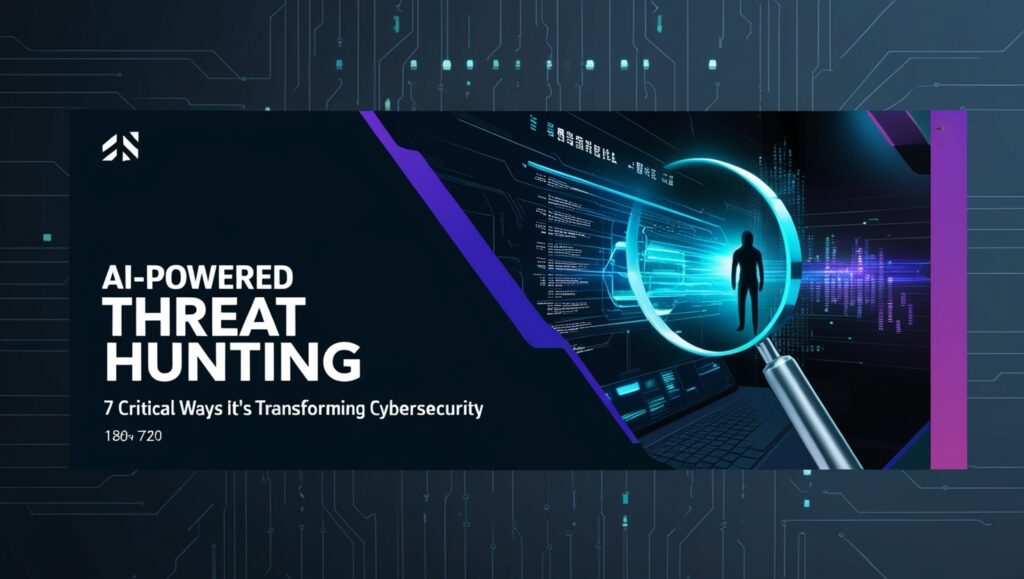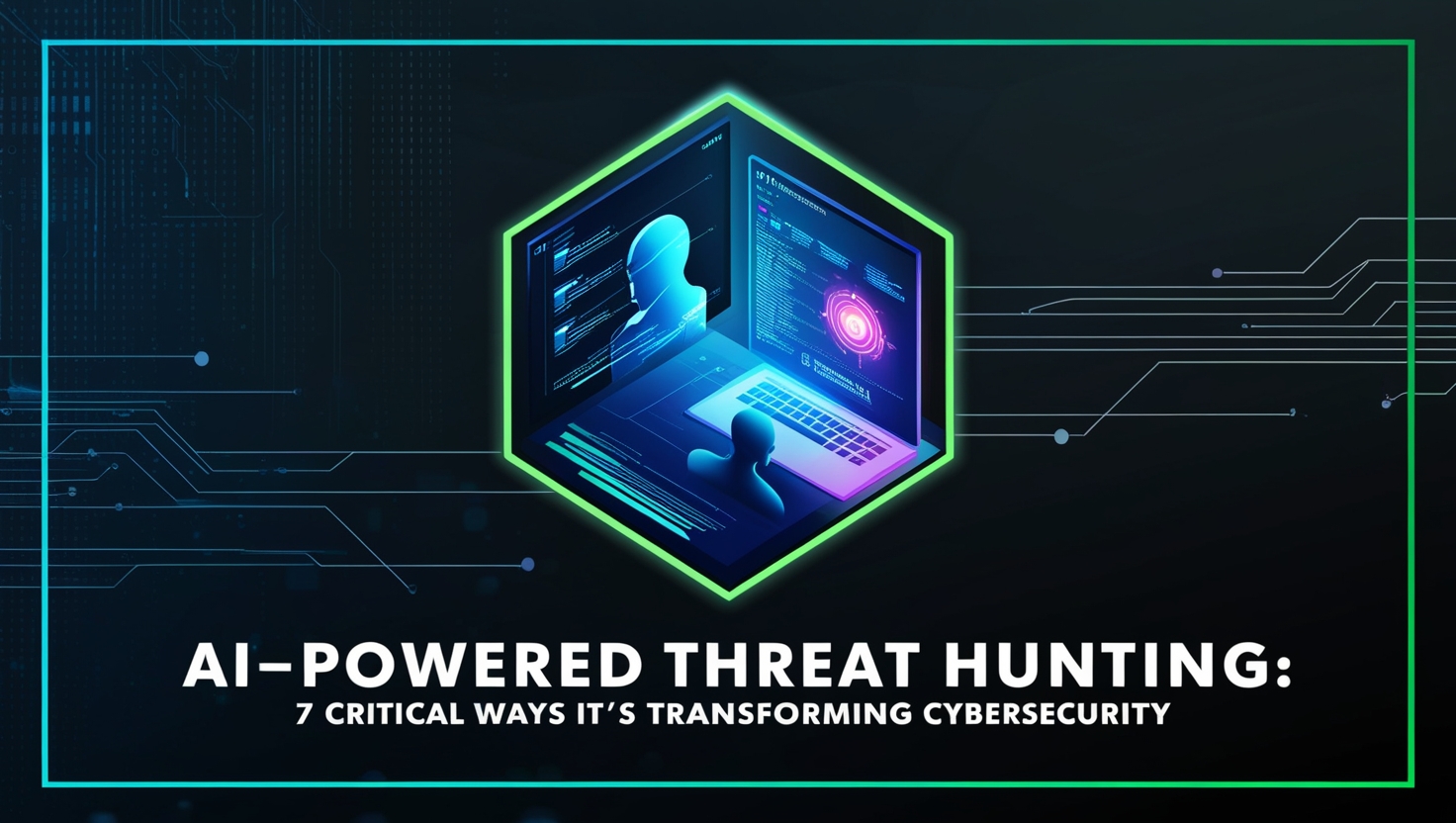Cybersecurity is a battlefield, and the enemy’s getting craftier by the minute. Hackers aren’t just throwing viruses at us anymore—they’re cooking up bespoke attacks that slip through the cracks of yesterday’s defenses. That’s where AI-Powered Threat Hunting comes in, a cutting-edge approach that’s rewriting the rules. It’s not about sitting back and waiting for trouble; it’s about tracking it down with tech that thinks faster than we ever could. Let’s dive into this fascinating world and unpack why it’s the talk of 2025.

1. The Rise of AI in Cybersecurity: A New Era of Defense
The digital landscape’s a mess—ransomware, phishing, insider threats, you name it. Back in the day, a sturdy firewall and some antivirus software were enough to sleep easy. Not anymore. Cybercrime’s projected to cost $10 trillion annually by 2025, and attackers are using AI themselves to outsmart us. Enter artificial intelligence as our counterpunch. It’s analyzing petabytes of data, spotting threats in milliseconds, and turning defense into offense. This isn’t a trend—it’s a seismic shift, and AI-Powered Threat Hunting is the spearhead, proactively seeking out danger in ways we’ve never seen before.
2. What Is AI-Powered Threat Hunting, Anyway?
So, what’s this buzzword really mean? Think of AI-Powered Threat Hunting as a tireless cyber sleuth. Unlike traditional tools that sound the alarm after a breach, this is about hunting threats before they blow up. It’s AI—machine learning, neural networks, behavioral analytics—scouring networks for oddball activity. Maybe it’s a server pinging an obscure IP at midnight or a user downloading files they’ve never touched before. It’s not waiting for a red flag; it’s sniffing out the faint whiff of trouble and pouncing. In short, it’s cybersecurity with a predator’s instinct.
3. Why Traditional Defenses Aren’t Enough Anymore
Old-school cybersecurity is like a castle with a moat—great until someone sneaks in through the back door. Signature-based systems (think antivirus) only recognize threats they’ve seen before. But modern attacks? They’re shape-shifters—zero-day exploits, polymorphic malware, or even legit credentials hijacked by bad actors. Add remote work, cloud sprawl, and IoT devices, and your moat’s a puddle. Traditional tools are reactive, slow, and blind to the unknown. AI flips that script, hunting proactively across chaotic, borderless networks where static defenses crumble.
4. How AI Hunts Threats: The Tech Behind the Magic
Let’s pop the hood. At its core, AI-Powered Threat Hunting leans on machine learning (ML) to build a baseline of “normal”—what your network looks like on a good day. Then it watches for deviations. Say an employee’s account starts encrypting files en masse—ML flags it as anomalous. Deep learning, a fancier cousin, might analyze packet data to catch subtle attack signatures. Natural language processing (NLP) scans emails for phishing lures, while unsupervised algorithms hunt without predefined rules, perfect for new threats. It’s a symphony of tech—data lakes, neural nets, real-time analytics—working together to outthink the bad guys.
5. Real-Life Wins: AI Threat Hunting in Action
Need proof it works? Picture a global retailer with 10,000 employees. Their AI spots a spike in outbound traffic from a single workstation—turns out, it’s malware exfiltrating customer data. Shutdown happens in minutes, not days. Or consider a healthcare provider: AI catches a ransomware worm creeping through patient systems by noticing unusual file access patterns, saving lives and millions. These aren’t hypotheticals—companies like CrowdStrike and Darktrace are already showcasing AI hunting down threats that slip past human eyes. It’s real, messy, and incredibly effective.
6. The Human-AI Partnership: Who’s Really in Charge?
Here’s the million-dollar question: is AI the boss now? Not quite. Think of it as a turbocharged assistant. AI can process a million logs while you’re sipping coffee, but it doesn’t get the full picture. Humans bring context—why that late-night login might be legit, or how a new hire’s behavior fits the puzzle. It’s a tag team: AI flags, humans decide. The best setups train analysts to wield AI like a tool, not a crutch, ensuring decisions stay sharp and grounded. Together, they’re a powerhouse.
7. Challenges and Risks: Can AI Be Trusted?
AI’s not perfect—shocker, right? False positives are a headache; imagine chasing a “threat” that’s just a quirky intern’s habits. Then there’s adversarial AI—hackers poisoning datasets to blind the system, like tossing red herrings at a detective. Privacy’s another wrinkle; all that data-crunching can feel Big Brother-ish if not handled right. And if teams lean too hard on AI, they might miss what it doesn’t catch. The fix? Rigorous testing, human oversight, and constant updates to keep AI honest and hackers guessing.
8. The Future of Threat Hunting: What’s Next for AI?
Buckle up—the future’s wild. AI could soon predict attacks by modeling attacker psychology, not just data patterns. Imagine it paired with quantum computing, cracking encryption threats we can’t yet fathom. Or picture AI bots dueling AI-powered hackers in real time, a cyber chess match. As cloud adoption skyrockets and 5G connects everything, threats will multiply—AI’s got to evolve, maybe integrating with blockchain for tamper-proof logs or IoT for device-level hunting. It’s not just the future; it’s the next frontier.
9. Getting Started: Bringing AI Threat Hunting to Your Organization
Ready to deploy this beast? Don’t dive in blind. Start with a gap analysis—where are your defenses weak? Pick a platform—say, Microsoft Sentinel or Splunk with AI add-ons—that matches your scale. Train your team; they need to speak AI’s language, not just push buttons. Pilot it on a small network segment, like your HR servers, and tweak as you go. Budget for expertise—consultants or vendor support can smooth the ride. It’s less about cash and more about commitment; start smart, scale steady.
10. FAQ Question
Q: Can small businesses afford AI-Powered Threat Hunting?
A: Totally! It’s not just for tech giants. Cloud-based solutions like Google Chronicle or affordable platforms from startups level the field. Small teams might not need a full AI army—just a lightweight tool that hunts the big stuff. Pair it with basic hygiene (strong passwords, updates), and you’re golden without breaking the bank.

Leave a Reply